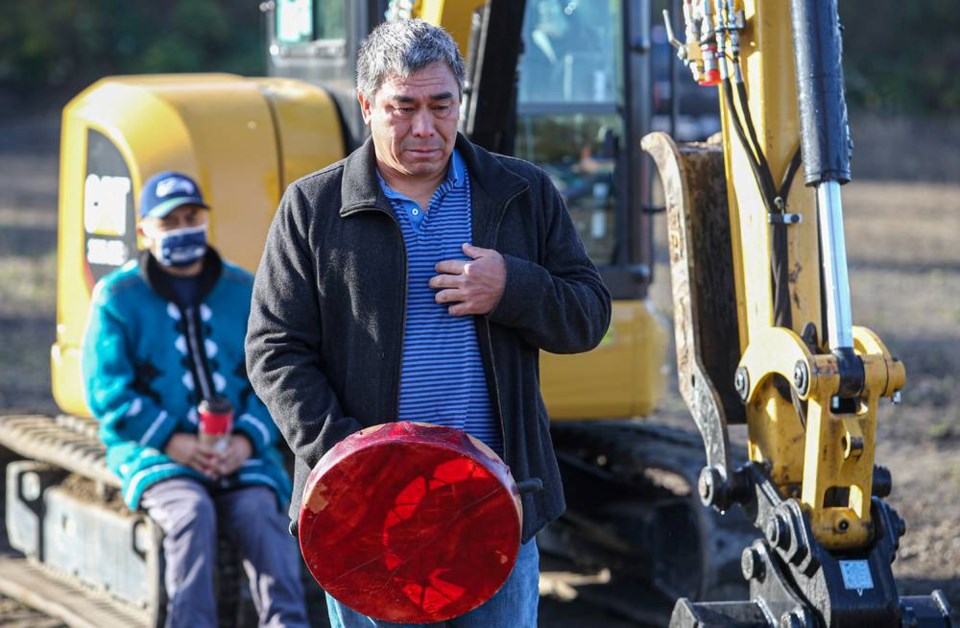The Tsawout First Nation broke ground on the site of a new longhouse Monday, in a move that community members say will rebuild not only their spiritual and ceremonial centre, but their people.
For 11 years, the community has lived without a longhouse, where elders bestow traditional names on young people, the dead are mourned and cultural teachings are passed on. A fire destroyed the longhouse in July 2009.
Since losing what councillor John Etzel called the “heartbeat of the community,” members of the nation have travelled to other longhouses to hold their ceremonies.
“It’s not the same as doing it in your own home,” said Etzel, whose traditional name is YEXPILEM. “When we hold our ceremonies here, we have all the community support. Community comes together to make make things go smoothly. And when we’re having it in neighbouring communities, the support can’t be there as much as we need it to be.”
The longhouse site is on the Tsawout reserve, which is home to about 600 people. Members will again be able walk to and from ceremonies to spend early mornings or full days cooking and preparing for events, Etzel said.
Eric Pelkey, Tsawout’s treaty officer, said the building will bring back cultural teachings.
“For 11 years, we’ve been homeless, without a place to come to gather to sing our sacred songs and do our sacred healings,” Pelkey said.
“Our people have been lost. Now we’ll have a place to bring them to gather, to heal themselves, to heal each other and become strong again.”
The nation has lost youth to substance use in the years since the longhouse burned, said Etzel, who has had two close family members die. He attributes the deaths in part to the loss of the place where youth learned the Tsawout way of life.
Young people are initiated into winter dances each year, practising cultural songs and dances, and return the following year, but when the longhouse burned down, there was nowhere for them to go.
“Those ones that didn’t get to return, they were lost. They went in such a bad direction,” Etzel said.
Tsawout members came out to watch John Hermsen, the nation’s maintenance manager, start an excavator to break ground on the site.
Adam Olsen, who will be re-elected as the area’s MLA if election night results hold up, said he looks forward to the important governance work that happens in the longhouse.
“That sense of homelessness that you talk about is not just from a cultural perspective, but it’s from the governance of our communities,” said Olsen, who is a member of Tsartlip First Nation and was raised in WSÁNEĆ territory on the Saanich peninsula.
Etzel hopes the project will be complete by next summer.
The nation expected to begin work on a new longhouse in 2017, but politics and a lack of funds stalled the project, he said.
The current chief and council, elected in 2018, made the longhouse a priority.
The cause of the 2009 fire was never determined but there was evidence that people had been squatting in the building, Etzel said.
That longhouse had been built to replace one that burned down in 1978. It took eight years to build the replacement.
The new longhouse will be built on the same site as the previous structures, but shifted slightly, because it’s considered bad luck to rebuild on the exact spot, Etzel said.
The First Nation plans to hire security to watch the building when it’s not in use.



